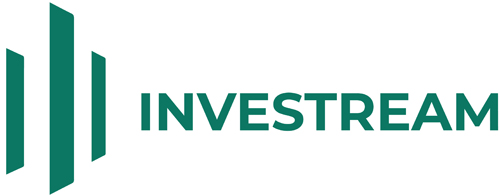How to Use a 401(k) to Invest in Real Estate
401(k)s can seem like Monopoly money, can’t they? You’ve got this pool of money that’s accruing over time, but it can feel stuck, imaginary, or like it can’t do anything for you until you retire.
When managed by an employer, the options for a 401(k) can feel rigid, but depending on where your plan is or where you decide to move your retirement funds, you may actually have more options than you think! In fact, you might be closer to being able to invest in real estate with your retirement savings than you thought.
We’ll talk about how you can invest in real estate through a self-directed plan, how to get a self-directed plan if you don’t have one already, and why you might consider moving your money to make this investment.

Can you use a 401(k) to invest in real estate?
The short answer is yes: You can use a 401(k) to invest in real estate as long as you have a self-directed option. A self-directed 401(k) gives you the ability to invest in alternative assets, including real estate. You can also use this kind of 401(k) to invest in precious metals, private equity, or other alternative assets.
How do I get a self-directed 401(k)?
Generally, self-directed 401(k)s are offered by small businesses or are chosen by people who are self-employed. If you’re part of a bigger organization, it’s likely that your 401(k) isn’t self-directed. If you’re not sure, you can always ask your plan administrator if they allow self-directed investing.

Can I switch to a self-directed 401(k)?
Technically, you can’t switch from an employer-sponsored plan that’s not self-directed to a 401(k) that is, but you can add a self-directed plan to your retirement strategy. It just won’t be a 401(k) because it’s not sponsored by your employer. Not all financial institutions offer self-directed options, so before you open an account, make sure that is a possibility.
As long as you stay within annual contribution limits, you can also contribute to a self-directed IRA. If you are self-employed or a small business, you can also opt for a self-directed 401(k) plan. This is a great option for someone well-versed in investing who understands the additional risks and complexity that can come with self-directed plans.
Steps to self-directed IRAs and 401(k)s
- Open a new IRA (or 401K) account that can be directed to alternative investments
- Transfer funds from your existing traditional accounts
- Find alternative investment opportunities and direct a custodian to invest on your behalf
Depending on how you decide to open the account and who it is being managed by, you may need to roll over existing funds into a self-directed IRA or 401(k). The method of rollover may depend on the rules and abilities of the new custodian. To learn more about the process, visit Quest Trust’s Education Center.
Once you’ve rolled over funds or funded your account, you’ve got to choose your investments. A self-directed retirement fund gives you the flexibility to choose from a wider variety of investments, like real estate. Choosing your investments is not as automatic as when you enroll in an employer-sponsored plan, and they require more upfront research to ensure you’re making a wise financial decision.
The more you can research your prospective investments, their historical returns, and the track record of the companies offering the investments, the more likely you are to make a well-informed decision.
Finally, you want to regularly monitor performance, especially at the beginning, to ensure the outcomes are aligning with your overall investment goals. You’ll want to be more hands-on with a self-directed account than you likely are with an employer-sponsored and managed account.

Considerations for self-directed accounts
When switching to a self-directed 401(k) or IRA, you’ll want to keep these things in mind:
- Opening and maintaining a self-directed account can be subject to fees. For example, Quest Trust Company charges either flat fees per asset, per year, or fees based on the amount amassed in the IRA. However, these fees can often be significantly lower than accounts that are more managed.
- The rules for early withdrawal are the same as with other types of retirement accounts. Before age 59 ½, if you withdraw money from gains, you may need to pay taxes on those gains.
- Real estate investing can require longer holds. This means it can take longer to move your money elsewhere if you change your mind. You want to be sure of the investment you’re making before you commit.
- Real estate can have stronger returns than other asset classes – read more about that on our recent blog about cash-on-cash returns.
- Self-directed investing isn’t just limited to IRAs! You can self-direct Health Savings Accounts (HSAs) and Education Savings Accounts (ESAs) as well.
- With self-directed IRAs, you still have the option of Roth versus Traditional. With a Traditional IRA, you pay taxes on your money when you withdraw. With a Roth IRA, the money is already taxed, so you won’t pay for them when you withdraw. This should also factor into your overall investment strategy.
With greater flexibility comes a greater need to know how to use that flexibility. Educating yourself and working with investment options you trust is key to your success. Talking to a financial advisor can help you figure out what the right option is for you.
